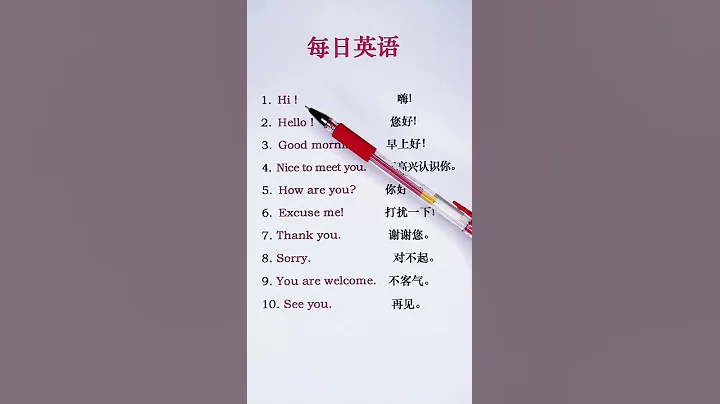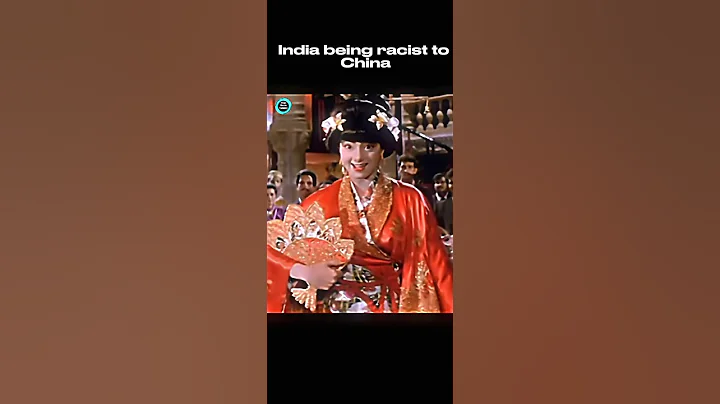It is well known that Korean and Japanese characters have always been deeply influenced by Chinese characters. Although South Korea has gradually replaced Chinese characters with Korean , the application of Chinese characters can still be seen in some important occasions and document writing, and even in unearthed cultural relics and museums Cultural relics are written with Chinese characters. What impact will this have on future generations? How to interpret the Chinese characters in the cultural relics? As for why kanji are retained in Japanese, it would almost take a book to answer. In short, however, without kanji, written Japanese would become somewhat ambiguous, that is, much of its clear meaning would be lost. As for the pros and cons of whether they use or discard Chinese characters, the issue becomes quite complex. Some netizens also raised such a topic on foreign forums: Why do Koreans give up Chinese characters? On the contrary, why do Japanese keep Chinese characters? What are the advantages or disadvantages of using or discarding Chinese characters?

Question: Why do Koreans give up Chinese characters? On the contrary, Why do Japanese keep Chinese characters? What are the advantages or disadvantages of using or discarding Chinese characters?
We have selected the opinion of a Korean netizen, let’s take a look at what he said?

Korean netizens' opinions
Let me answer your third question about the pros and cons of using Chinese characters first. Chinese (Hanzi) is a logographic writing system, meaning that the characters represent words and ideas, not sounds as a phonetic system does. This means that in order to read and write Chinese fluently, you'd need to know thousands of characters — as many characters as words.
I would like to answer your third question first, about the pros and cons of using Chinese characters. Chinese (Hanzi) is a symbolic writing system, meaning that Chinese characters represent words and ideas rather than the sounds represented by a phonetic system. This means that in order to read and write Chinese fluently, you need to know thousands of Chinese characters—as many characters as there are words.
This obviously comes at a huge learning curve. It takes many years of constant memorization and usage to master Chinese, unlike the Latin alphabet, which most children can learn within a year. Hangul in particular is even more intuitive and easy to learn because of its rational design (consonants are shaped like your mouth when you make the sound, and the vowels are extensions of the long e and o sounds). Chinese, on the other hand, has some semblance of order and reason in the way the characters are written , but for the most part, it just takes sheer memorization to learn the characters.
which obviously requires a huge learning curve for over . Mastering Chinese requires years of continuous memorization and use, unlike most children who can learn the Latin letters and in one year. Especially Korean, because of its reasonable design (the consonants are shaped like your mouth when pronounced, and the vowels are extensions of the long sounds e and o), it is more intuitive and easier to learn. On the other hand, there is a certain order and rationality to the way Chinese characters are written, but in most cases, learning Chinese characters requires nothing more than pure memorization.

This extreme learning difficulty and unwieldiness is the reason why most logographic systems have either gone extinct or evolved to phonetic systems. But Chinese remained. Why? Well, first you need to understand that “China” is less a single nation and more of a concept . The original settlers of the Yellow River were the ones to first use Chinese characters and lay the foundations of civilization in East Asia, but over time, “China” came to include a progressively wider range of lands, people, and cultures. China was a melting pot of East Asian cultures, that not only absorbed new members through conquest, but also conquered by being (Mongols and Manchus are the most prominent of examples).
This extreme learning difficulty and clumsiness is what most symbol systems either have extinction, or the evolution of speech systems. But China still exists. Why? First, the original settlers in the Yellow River basin were the first to use Chinese characters and laid the foundation of East Asian civilization, but over time, "China" came to include a wider range of lands, people, and cultures. China is a melting pot of East Asian cultures , absorbing new members not only through conquest but also through being conquered ( the Mongols and the Manchus being the most prominent examples).
With all these different groups of people, all with different languages, it was important for there to be a standardized way to communicate. But a phonetic system only works when the writer and reader speak the same language. Think about it. This post is written using the same alphabet a French speaker uses, but because I speak and therefore write in English, the French speaker may be able to pronounce the words but they wouldn't understand what it means. And that's the fundamental issue with phonetic systems: they communicate sounds. It's up to the reader to convert those sounds to meaning.
Faced with so many different people speaking different languages, it is important to have a standardized way of communication. But the phonetic system only works if the writer and reader speak the same language. Think about it. This post is written in the same alphabet as French speakers, but since I speak in English I am writing in English and French speakers may pronounce the words but not understand what it means. This is the basic problem with speech systems: they communicate sounds. It's up to the reader how to translate these sounds into meaning.
But Chinese doesn't have that problem. 北 can be pronounced in a number of different ways — Mandarin: bei; Cantonese: bak; Japanese (Kanji): boku; Korean (Hanja): buk — but it will always mean one thing: "north." This means that regardless of what language you speak, as long as you know the characters and understand how to arrange them, you can communicate with anyone else who knows the characters.
But the Chinese don't have this problem. The word "北" is pronounced in many different ways - Mandarin : bei; Cantonese : baker; Japanese (kanji): boku; Korean (kanji): buk - but it always means something Thing: "North". This means that no matter what language you speak, as long as you know these characters and know how to arrange them, you can communicate with anyone who knows these characters.
If that seems like an alien concept, keep in mind that most of the world today uses characters: 1, 2, 3, 4, 5, 6, 7, 8, 9, 0. Indeed, Arabic numerals are characters that represent an idea that remains constant despite having different names all over the world. 1 = one = uno = yi = hana = ichi.
If this seems like an alien concept, remember that the characters used in most places in the world today are: 1. 2, 3, 4, 5, 6, 7, 8, 9, 0. In fact, Arabic numerals are characters that represent an unchanging idea, despite having different names around the world. 1 = 1 = uno = yi = hana = ichi.
Today, the major Chinese languages are Mandarin, Cantonese, and Hunanese, along with many other dialects. With 70% of the population now speaking Mandarin as their first language, having a logographic system may seem a little excessive, but long ago, there were Dozens if not hundreds of languages in the area that is today China.
Today, the main languages in China are Mandarin, Cantonese, Hunanese, and many other dialects. With 70% of the population now speaking Mandarin as their first language, having a notation system may seem a bit excessive, but long ago, in today's China, there are dozens or even hundreds of languages.
The Chinese needed a way to keep their massive, multilingual empire together, and thus its solution was to retain a standardized logographic writing system. This system was so effective at bridging cultural and lingual gaps that countries that never were incorporated into China proper — ie. Korea and Japan — adopted Chinese as their official writing systems.
The Chinese needed a way to maintain their vast, multilingual empire, so its solution was to maintain a standardized symbolic writing system. This system was so effective in bridging cultural and language gaps that those countries were never included in China. South Korea and Japan use Chinese as their official writing system.
So, to recap: Chinese is a logographic system that is extremely hard to learn and unwieldy compared to phonetic systems. But unlike a phonetic system, Chinese has the advantage of being able to be used across different languages.
So, to recap: Chinese is a writing system that is extremely difficult to learn and clumsy compared to phonetic systems. But unlike phonetic systems, Chinese has the advantage of being usable across languages.

Now, back to the other two questions about Korea and Japan. As I said, since the dawn of their civilizations, Korea and Japan used Chinese characters not only because it was virtually the only cohesive writing system in East Asia, but because it allowed them to interact with China, each other, and other countries in the so-called “Sino-sphere.” And, perhaps even more importantly, China being the intellectual, cultural, and political heart of East Asia (which to the Koreans and Japanese meant the world), all books of learning were written in Chinese. That's right. All of them. (I mean, after all, the Chinese make up 80–90% of the population of East Asia! OF COURSE they were the originators of most of East Asian literature, philosophy, statecraft, science, etc.)
Now, back to the other two questions about Korea and Japan. As I said, Korea and Japan have used Chinese characters since the beginning of their civilization not only because it was effectively the only cohesive writing system in East Asia, but because it allowed them to interact with China, each other, and those in the so-called "Sinosphere" interact with other countries. And, perhaps more importantly, China is the intellectual, cultural, and political center of East Asia (the world to Koreans and Japanese), and all study books are written in Chinese. that's right. All of them.(I mean, after all, the Chinese make up 80-90% of the East Asian population! Of course, they are the originators of most East Asian literature, philosophy, statecraft, science, etc.)
And THIS is why the upper-class males of Korea and Japan dismissed native phonetic systems such as Hangul or Hiragana Katakana until the 19th century. To become educated, you obviously needed to read, but in order to read, you absolutely had to learn Chinese characters. Until the 19th century, very few books of learning were translated to their respective native writing systems, and thus the educated elite of Korea and Japan (exclusively aristocratic men) looked down on Hangul or Hiragana/Katakana as wastes of time.
Men are dismissive of native phonetic systems such as Korean, hiragana, and katakana. In order to be educated, you obviously need to read, but in order to read, you have to learn Chinese characters. Until the 19th century, few books were translated into their respective native languages, so the educated elites of Korea and Japan (exclusively aristocratic men) looked down on Korean or Hiragana/Katakana as a waste of time.

The plaques are all in Chinese characters
But for everyone else, phonetic writing systems weren't all that bad. Korea and Japan are both ethnically and culturally homogenous countries, and thus they each spoke virtually one single language: Korean and Japanese, respectively. When all your neighbors and friends speak the same language as you, why bother learning thousands of characters when you can just learn a couple dozen of consonants and vowels? Thus, Hangul and Hiragana were used as a way to communicate and to write poetry, novels, and songs . But because the upper-class men were busy using Chinese to read the Chinese classics, history, and philosophy, only the upper-class women and some of the lower-classes used these systems.
But for others, phonetic writing The system isn't that bad. South Korea and Japan are both ethnically and culturally homogeneous countries, so they actually speak the same language: Korean and Japanese. When all your neighbors and friends speak the same language as you, why bother learning thousands of characters when you can only learn a few dozen consonants and vowels? Hence, Hangeul and Hiragana are used Serves as a means of communication and is used to write poems, novels and songs. But since upper-class men were busy reading Chinese classics, history, and philosophy in Chinese, only upper-class women and some lower-class people used these systems.
That all changed in the 19th century, when the Imperial West finally turned its attention to East Asia. After Qing China was brought to its knees after the Opium Wars, it became increasingly clear to Korea and Japan that they needed to modernize quickly. But the key to modernization was first and foremost education — not in Confucian philosophy — but in mathematics, science, and, perhaps most importantly, one's own national history.
This all changed in the 19th century, when Western empires finally turned their attention to East Asia . After the Opium War, The Qing Dynasty succumbed, North Korea and Japan became increasingly aware that they needed to modernize quickly. But the key to modernization is first and foremost education - not Confucian philosophy - but mathematics, science and, perhaps most importantly, one's own country's history.
To do this, Korean and Japanese societies had to completely revamp their education systems, and indeed this was one of the first steps toward modernization that both countries took. But to educate the masses, they needed to learn how to read and learn quickly. To do this, both countries implemented a mixed system between Chinese characters and native phonetic systems — a method that Japan continues to use today.
In order to do this, both countries must completely reform their education systems. In fact, this is The first step towards modernization for both countries. But in order to educate the public, they need to learn how to read and learn quickly. To do this, both countries implemented a hybrid system of kanji and native phonetic systems - an approach still used in Japan today.

Japan’s annual Kanji selection
Generally, Chinese characters were usually used for the actual semantics (words with meaning) of a sentence, while the phonetic system (Hangul in Korea, and usually Hiragana and sometimes Katakana in Japan) was used for grammatical words . This system isn't exactly new — both the Koreans and Japanese did this to a smaller degree for hundreds of years — but these reforms standardized and elevated Hangul and Kana.
Generally speaking, Chinese characters are usually used for the actual semantics of sentences (there are meaning words), while the phonetic system (Hangul in Korea, usually Hiragana , and sometimes Katakana in Japan) is used for grammatical words. This system isn't entirely new - Koreans and Japanese have been doing it this way for hundreds of years, to a lesser extent - but the changes standardize and enhance Hangeul and Kana.
There was a huge debate in Meiji Japan about making writing Japanese easier, with some arguing that Chinese characters be almost entirely replaced by Kana. This ended up not happening for various reasons, one of them being that Hiragana and Katakana were never meant to be used on their own. Hiragana in particular was actually derived from the cursive form of Chinese characters to make reading and writing Japanese smoother.
In Meiji-era Japan, debate raged over how to make writing Japanese easier, with some arguing that kanji almost completely replaced by pseudonyms. This ultimately didn't happen for a number of reasons, one of which is that hiragana and katakana were never used separately. Hiragana was actually derived from the cursive form of kanji to make Japanese reading and writing smoother.
Then comes the fact that both Kana forms are syllabaries, not alphabets, meaning they denote syllable sounds, not consonants and vowels. This post is already long, so just take my word for it that syllabaries are not as easy to use on their own compared to alphabets. A happy medium was found, which is more or less what the Japanese use today.
Then, both kana forms are syllables, not letters, meaning they represent syllables rather than consonants and vowels. This post is already quite long, so take my word for it that the syllable table itself is not easy to use compared to the alphabet. A compromise was found, which is pretty much what the Japanese use today.
But while the Japanese kept the mixed system, the Koreans began adopting Hangul — which, unlike Hiragana or Katakana, is a full-fledged alphabet designed to be used on its own — more and more. The rise in Korean nationalism further raised Hangul's popularity, and by the turn of the century, Hangul was used almost exclusively in many major publications and books.
However, while the Japanese continued to use a hybrid system, the Koreans began to increasingly adopt Hangul - as distinct from Hiragana or Katakana , Hangul is a completely independent alphabet.The rise of Korean nationalism further increased Hangeul's popularity, and by the turn of the century, Hangeul appeared almost exclusively in many major publications and books.
That said, the government continued to use Chinese characters or a mixed system until Korea's annexation in 1910, but even during the first decades of Japanese colonization, Hangul continued to develop and was even taught at some public schools in Korea. By the time Imperial Japan prohibited Korean and Hangul in 1938 as part of its attempts at wiping out Korean culture, Hangul had been firmly implanted in the Korean psyche and cultural identity, so much so that it was taught in secret in underground schools.
That is to say, they have been Hanja or a mixed script was used until the unification of Korea in 1910, but even during the first decades of Japanese colonial rule, Hangeul continued to develop and was even taught in some public schools in Korea. In 1938, the Japanese imperialists banned the use of the Korean language and Korean language in order to eliminate Korean culture. Until then, Hangeul had been deeply embedded in Korean people's psychology and cultural identity, and was even taught in secret.
But to finally get to your question, it wasn't until after the Japanese left and both North and South Korea were firmly established when Hangul nearly completely supplanted Chinese. For the North, the change occurred in 1949, when, in true authoritarian fashion, the government proclaimed Hangul as the only legitimate writing system and banned Chinese characters altogether. For the South, the process was more gradual. The South Korean government did push for Hangul's exclusive use in the 70s, but the transition was also partly natural.
But Finally to your question, it wasn't until the Japanese left and North and South Korea were firmly established that Korean almost completely replaced Chinese. For North Korea, things changed in 1949, when the government declared Hangeul the only legal writing system and banned the use of Chinese characters altogether. For the South, the process was gradual. The South Korean government did promote the exclusive use of Hangul in the 1970s, but this shift was also natural to a certain extent.

Korean Spring Festival Couplets
Now that Hangul was fully standardized and taught nation-wide, there was little need to use Chinese characters in Korea. Books and letters can always be translated, after all. And I'll go ahead and add that because Hangul is SO MUCH easier to type on a keyboard than Chinese, Chinese characters' decline in modern Korea has only accelerated in the last couple decades with very little chance of a revival in the near future.
Now, Korean has been fully standardized and used nationwide Popularity, there is almost no need to use Chinese characters in Korea. After all, books and letters can always be translated. I would also add that because it is much easier to type Korean on a keyboard than Chinese, the decline of Chinese characters in modern Korea has only accelerated in the past few decades, and there is little chance of a revival in the near future.
And there you have it, an abridged (but still long) explanation of the pros and cons of Chinese characters and how Korea and Japan got to where they are today. It all boils down to what these societies needed. The Chinese needed a system to bring its diverse people together, while the Koreans and Japanese needed to use this system to tap into China's vast intellectual wealth and diplomatic network.
That's a brief (but still long) explanation of the pros and cons of Chinese characters, and how Korea and Japan are getting there to this day. It all comes down to what these societies want. The Chinese needed a system to bring disparate people together, and the Koreans and Japanese needed to use that system to tap into China's vast wealth of knowledge and diplomatic networks.
Do you agree with his point of view? Everyone is welcome to leave a message to discuss or like.





















